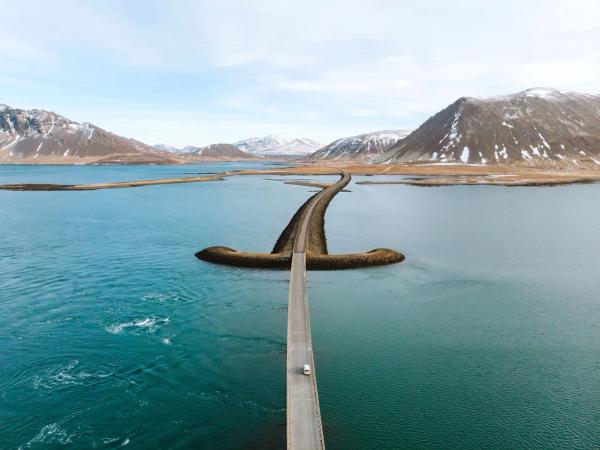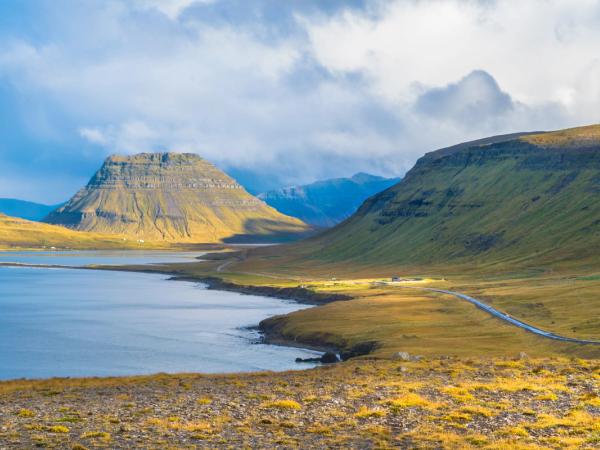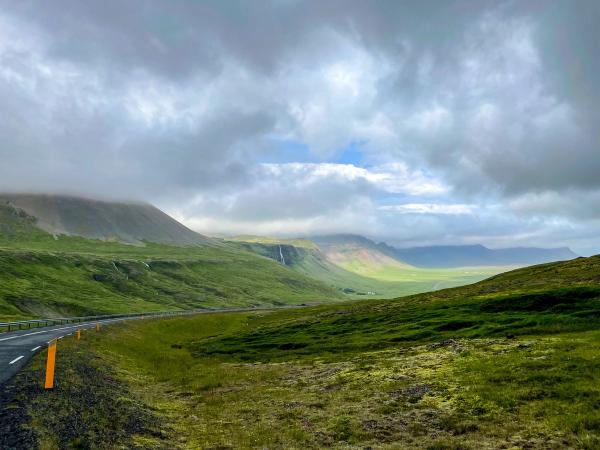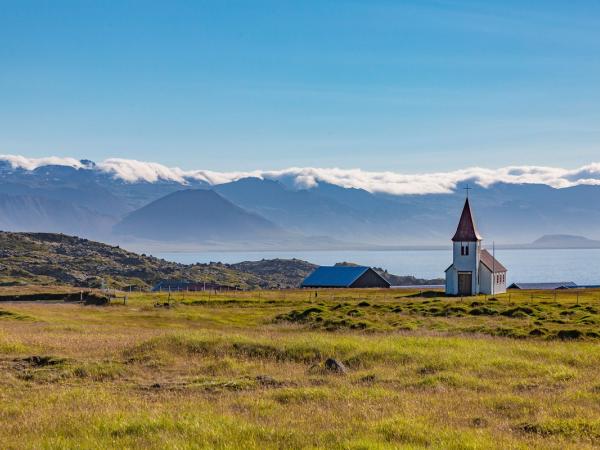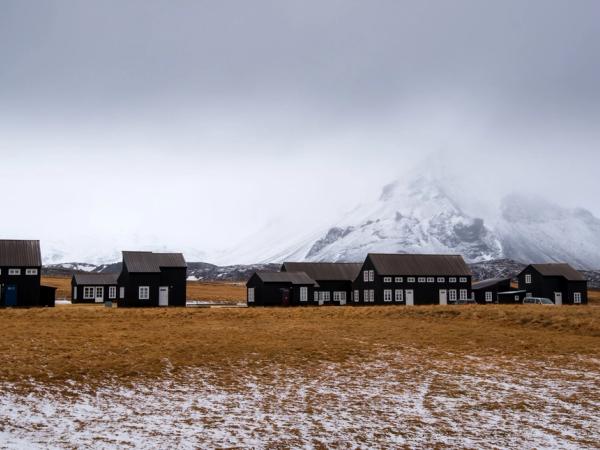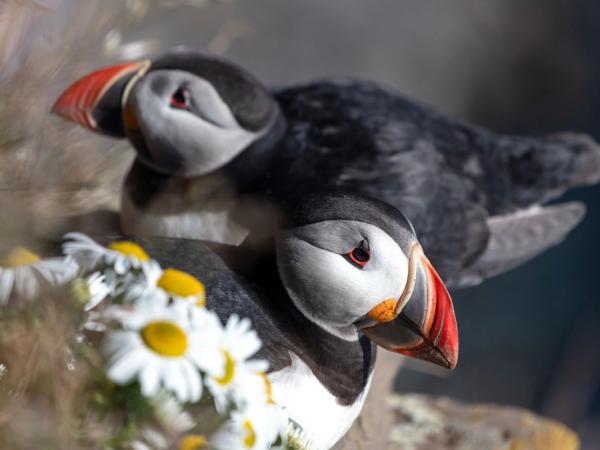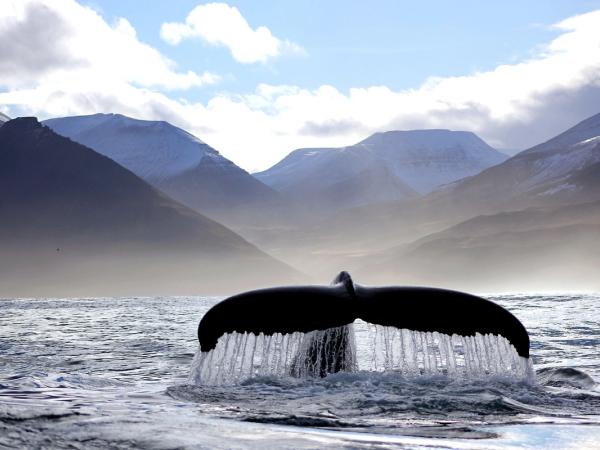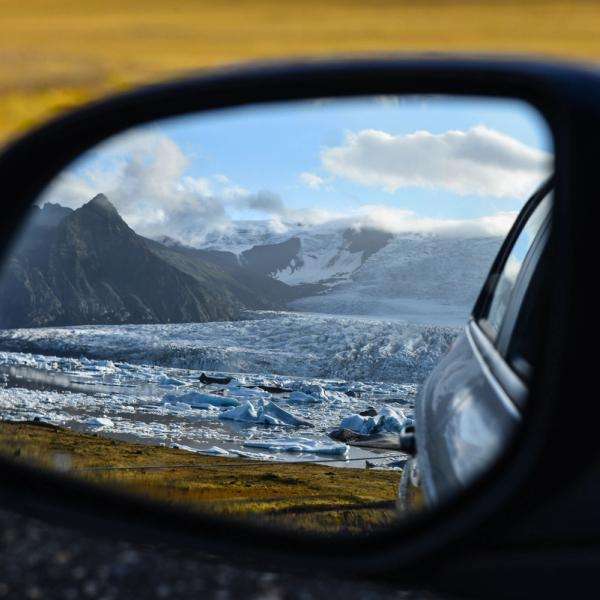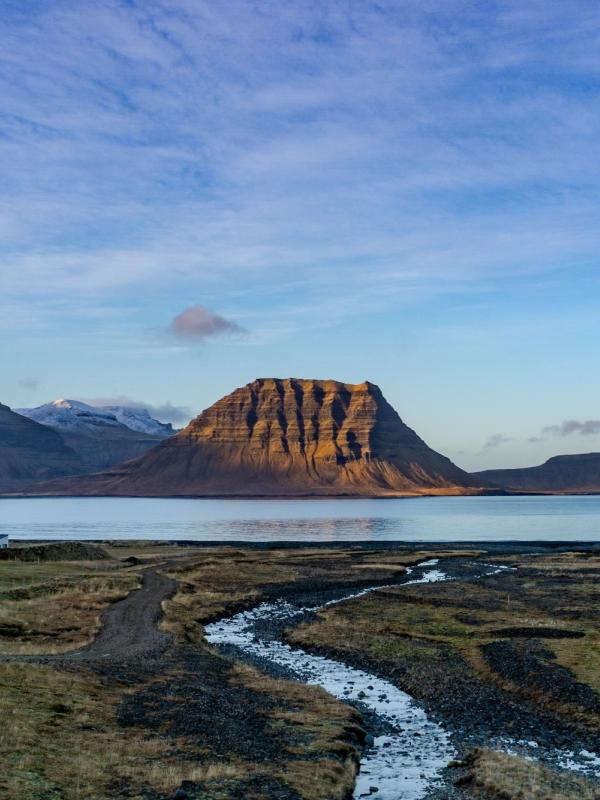
The Essence of Iceland: Snæfellsnes Peninsula Full Guide
Iceland is a place that is difficult to classify. There is so much to see and do in this country that it feels almost impossible to condense it into one category in one place. It’s a land of surreal beauty, where glaciers, volcanoes, waterfalls, and rugged coastlines paint a landscape that can’t be found anywhere else.
Among the country's most enchanting regions is the Snæfellsnes Peninsula, often referred to as "Iceland in Miniature" for its incredible diversity of natural wonders. This area in the west of the island is mainly known because it hosts one of the three national parks there are in Iceland: Snæfellsjökull National Park.
But there’s much more than just the park. There's a lot to discover here. From the mystical Snæfellsjökull glacier, which inspired Jules Verne's "Journey to the Center of the Earth," to charming fishing villages and dramatic cliffs, this peninsula offers a microcosm of Iceland's most iconic landscapes. In this guide, we'll take you on a journey through Snæfellsnes, revealing why it's worth a visit, what you can see and do, how to get there, and much more. So pack your bags and get ready to discover this amazing corner of Iceland.
Key Takeaways
- Snæfellsnes Peninsula is on Iceland’s west coast. It’s a two-hour drive from Reykjavik.
- The most important feature on the peninsula is Snæfellsjökull National Park, one of the three national parks in Iceland.
- Snæfellsnes Peninsula is part of Iceland’s Western Region, called Vesturland in Icelandic.
- The peninsula is a great spot for bird watching and whale watching.
What’s the Snæfellsnes Peninsula?
The Snæfellsnes Peninsula sticks out on Iceland’s west coast, a 90-kilometer-long piece of land that’s wild and full of its own charm. It’s not as packed with tourists as some of the more famous spots, but it’s got tons of natural beauty and a feel that’s like stepping into Iceland’s untouched heart. The Snæfellsjökull volcano, with its icy glacier on top, sits over the whole area, and it’s more than just a nice view—it’s got history and stories behind it. About 4,000 people live here, spread out across around nine small towns and fishing villages, like Stykkishólmur, Ólafsvík, and Grundarfjörður. There are no big cities, just little, close communities that have made the ocean their primary source of living. From secret hot springs hiding in the hills to old tales about trolls turned to stone by the sunrise, Snæfellsnes is a quieter part of Iceland with plenty of cool things to discover.
Why is Snæfellsnes Worth a Visit?
The Snæfellsnes Peninsula is often overlooked in favor of more famous destinations among tourists, like the Golden Circle or the Blue Lagoon. However, those who make the trip to Snæfellsnes are often surprised and feel rewarded with some of the country's most varied and striking landscapes, all within a relatively small area. Let’s take a look at some of the things that make this region so special.
What fascinates people the most about Snæfellsnes is the diversity of its natural landscapes
. Snæfellsnes is home to an astonishing variety of geological features, from black sand beaches and lava fields to towering mountains and picturesque fjords. The peninsula's diversity is the reason why it has been nicknamed "Iceland in Miniature," as it showcases nearly every type of landscape found across the country.
The area is also a place of high cultural and historical significance. The region is steeped in history and folklore, particularly surrounding Snæfellsjökull, a glacier-capped volcano that has been a source of inspiration for writers and artists for centuries. The area is also home to traditional Icelandic fishing villages that offer a glimpse into the country's heritage and the strong connection with the ocean it has had over the centuries.
Iceland is still not as touristy as other countries, and this area is a great spot because it’s usually less crowded than other parts of the island, especially compared to other regions such as the Golden Circle and the South Coast.
It’s impossible to talk about Snæfellsnes Peninsula without referring to Snæfellsjökull National Park. This amazing national park, the only one in the country that comprehends both land and marine areas, is, without a doubt, the highlight here. There’s a lot to see in the park, but don’t worry, a bit further down, we’ll explain in detail some of its best features.
Where is Snæfellsnes Peninsula and How to Get There?
The Snæfellsnes Peninsula is located on Iceland’s west coast, extending about 90 kilometers into the North Atlantic Ocean. It's not far from Reykjavik, making it accessible for day trips or multi-day excursions.
Driving from Reykjavik
The most common way to reach Snæfellsnes is by car, which gives you the flexibility to explore the peninsula at your own pace. From Reykjavik, take Route 1 (the Ring Road) north towards Borgarnes. After about an hour, you'll reach the exit for Route 54, which will take you directly onto the peninsula. The drive from Reykjavik to the town of Stykkishólmur, at the northern tip of Snæfellsnes, takes around two and a half hours.
What to See in Snæfellsnes?
Most of the best things to see and do in the Snæfellsnes Peninsula are inside Snæfellsjökull National Park, but not all of it. This park is truly astonishing, and we strongly recommend spending a good amount of time exploring as much as you can. But that’s not all there is.
Snæfellsjökull Glacier and Volcano
The Snæfellsjökull glacier is the crown jewel of the peninsula and the national park. In fact, it gives the park its name. This glacier-capped volcano is not only a geological marvel but also a site of cultural and mystical significance, and its magnetic fields have inspired countless myths and legends. Here’s where Jules Verne located the entrance to the Unknown in “Journey to the Center of the Earth.”
It has a height of 1,446 meters (4774 feet). There's a trail that goes all the way up to the summit, and the views from there are just impressive. You can’t only see all the land around, but on a clear day, you can see all the way to Reykjavik, which is 120 kilometers (75 miles) away. And you can also see the mountain from the capital. It’s a constant presence within the Snæfellsnes Peninsula and creates countless photo opportunities with different backdrops.
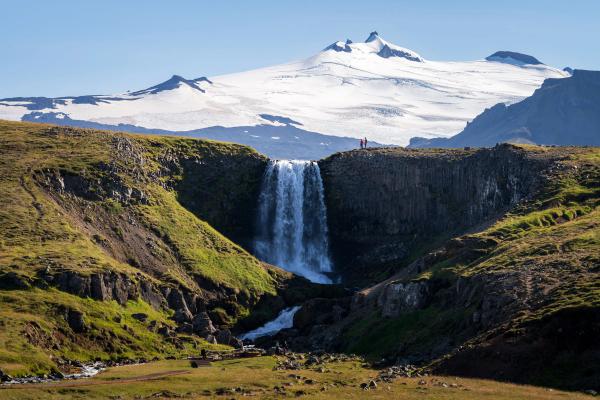
Kirkjufell Mountain and Kirkjufellsfoss Waterfall
The iconic Kirkjufell, which means “church mountain” in Icelandic, is the most photographed mountain in the entire country. It’s not impressive in size, as it stands 463 meters (1,520 feet) above the surrounding landscape. But its distinctive shape, resembling a church steeple or a witch's hat, makes it really attractive for photographers.
Not far from the mountain we can find Kirkjufellsfoss, a picturesque waterfall that perfectly complements the mountain, especially when viewed together. It’s especially enchanting in winter, as part of the waterfall partially freezes, creating a wonderland postcard.

Arnarstapi and Hellnar Villages
These fishing villages offer a glimpse into the deep connection of this area, and Iceland in general, with the sea. Once busy fishing ports, they are now tranquil villages with nice wooden houses.
Arnarstapi is known for its dramatic cliffs and rock formations, including Gatklettur, a natural stone arch. Hellnar is equally beautiful, with rugged cliffs and crashing waves. There's a coastal path that connects the two villages. The hike between Arnarstapi and Hellnar offers breathtaking views of the coastline and the surrounding mountains.
Búðakirkja (The Black Church of Búðir)
This iconic black church is a beautiful wooden little temple built in the middle of an impressive landscape: the Búðahraun lava fields. Búðakirkja is one of the few remaining black churches in Iceland and has become a symbol of the country's minimalist architectural style.
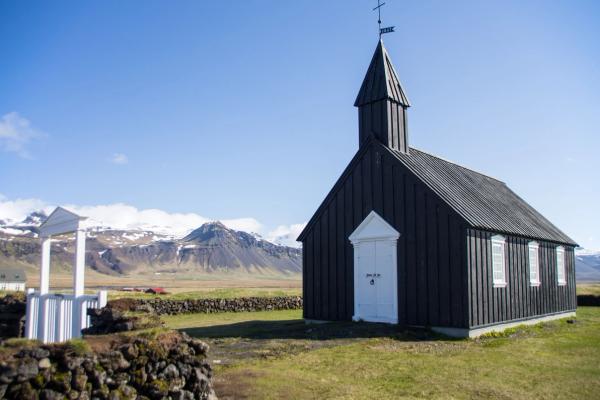
Lóndrangar Basalt Cliffs
The Lóndrangar cliffs are two massive basalt rock pinnacles that have been eroded by the sea over centuries. They give the appearance of a castle or fortress, or two guardians protecting the land. These formations are, in reality, part of an old volcanic crater and are a popular nesting site for seabirds. The tallest of the two pillars is 75 meters (245 feet) tall, and the smallest is 61 meters (200 feet) tall.
The cliffs are also steeped in local lore, as the legend says that they are the remains of trolls turned to stone by the sun.

Djúpalónssandur Black Sand Beach
Iceland is known for its many beautiful black sand beaches, and Djúpalónssandur is the perfect example. The beach is also a site of historical interest, with remnants of a British trawler that was wrecked here in 1948. The rusting metal pieces scattered along the shore serve as a reminder of the sea's power.
The beach is surrounded by surprising lava formations, including the tall cliffs of Dritvík. As you walk along the shore, you'll come across four large stones. These stones were traditionally used to test the strength of fishermen, with each stone representing a different level of strength. Even today, visitors can try to lift them.
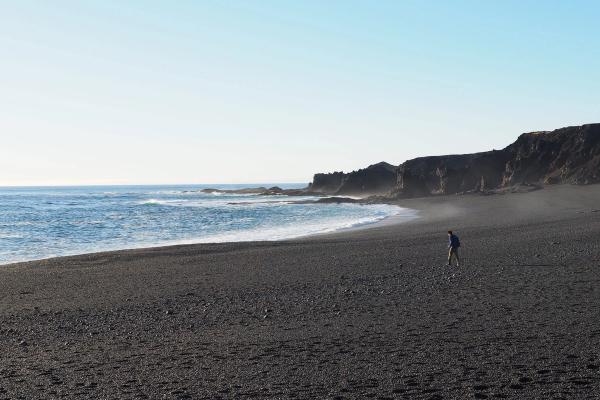
Ytri Tunga Beach
A completely different look to Icelandic beaches in comparison to Djúpalónssandur. Ytri Tunga is known for its golden sands and the colony of seals that can often be seen resting on the rocks or playing in the water. The beach is especially popular in the summer months when seal sightings are almost guaranteed.
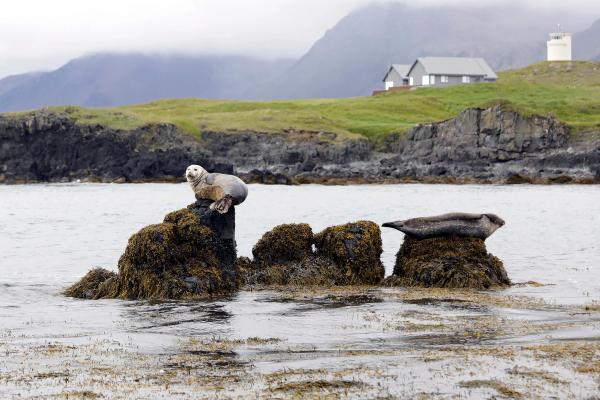
Rauðfeldsgjá Gorge
This narrow, hidden gorge near the southern coast of the peninsula is one of the most amazing sights in Snæfellsnes. The entrance to the Rauðfeldsgjá Gorge is almost hidden, making it feel like a secret passage into another world. Inside, you'll walk between cliffs covered in moss and alongside a stream that flows from deep within the mountain. There’s also a small waterfall pouring down on the rocks.
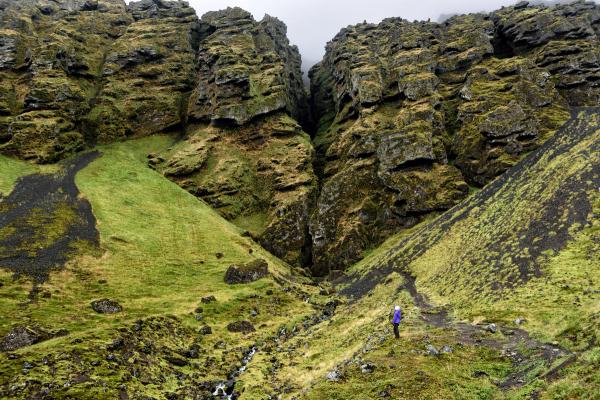
Berserkjahraun Lava Field
The Berserkjahraun Lava Field is a vast, rugged landscape formed by a volcanic eruption that happened more than 4,000 years ago. The field is named after one of the sagas of the Icelanders that tells the tale of two warriors known for their ferocity in battle. They were murdered and buried in this lava field.
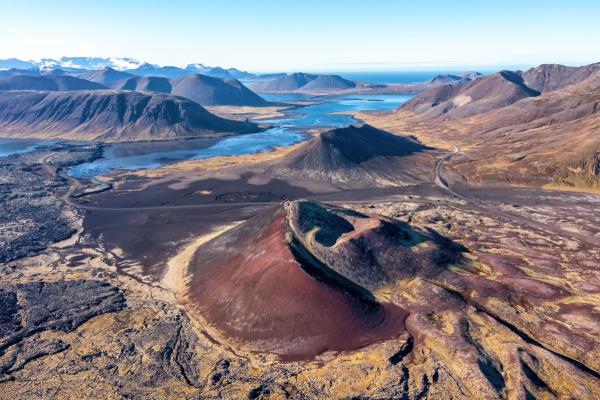
What to Do in Snæfellsnes?
There’s a wide range of activities that allow you to experience the peninsula’s natural beauty in many ways.
Hiking and Nature Walks
This is probably the most popular way to discover not only this region but Iceland in general. The entire island is a vast network of paths and trails that will take you to unforgettable places, and the Snæfellsnes Peninsula is no different.
It's a hiker's paradise, with trails ranging from easy coastal walks to challenging mountain treks. The hike between Arnarstapi and Hellnar is one of the most popular, offering stunning views of the cliffs and the ocean. If you are looking for a more challenging but rewarding adventure, the hike to the summit of Snæfellsjökull glacier is one of the best. It requires a guide but rewards you with unparalleled views of the peninsula.
Exploring Lava Caves
Iceland is known for its lava tubes, and Snæfellsnes is home to some of the best. Vatnshellir Cave, located inside Snæfellsjökull National Park, is a popular spot to discover the action of volcanic activity from a closer perspective. Go down into the earth and explore the intricate lava formations created by flowing molten rock thousands of years ago.
You can visit the cave on a guided tour. It’s not only a fun activity, but you’ll also learn a lot about how these caves were formed.
Wildlife Watching
The Snæfellsnes Peninsula is one of the best places to get a closer look at two of the most sought-after animals in Iceland: whales and birds. There are whale-watching tours departing from the village of Ólafsvík, offering the chance to see these majestic creatures in their natural habitat.
The numerous cliffs in the region are home to several bird species. There are a lot of places where these animals come to nest, especially around Lóndrangar cliffs and Búðahraun lava fields. Her, you can see the charming puffin.
Horseback Riding
Riding the charismatic Icelandic horse is one of the best ways to enjoy the amazing landscapes in Snæfellsnes. They’re small but powerful and are a beloved symbol of the country. Several farms on the Snæfellsnes Peninsula offer horseback riding tours that take you through some of the region's most beautiful places.
Photography
The whole of Iceland is like an outdoor photo studio waiting to be captured. And with its dramatic landscapes and ever-changing light, Snæfellsnes is a photographer's dream. Whether you're an amateur or a professional, you'll find endless opportunities to capture stunning images, from the iconic Kirkjufell Mountain to the black sand beaches and rugged coastline.
Local Culture and History
The small villages of Snæfellsnes are rich in culture and history. Spend some time in Stykkishólmur, the largest town on the peninsula. It has nice and charming houses, a picturesque harbor, and the fascinating Norwegian House Museum.
You can also visit the Bjarnarhöfn Shark Museum to learn about the traditional Icelandic practice of fermenting shark meat. You can even try this local produce, but be warned, it’s not for everyone.
Relaxing in Natural Hot Springs
After a day of exploration, there’s no better way to relax than taking a bath in one of the peninsula's natural hot springs. Landbrotalaug, a small but serene hot spring located near the town of Staðarsveit, offers a peaceful retreat. The warm, mineral-rich waters are perfect for soaking your tired muscles while enjoying the beauty surrounding you.
Where is Snæfellsnes Peninsula and How to Get There?
The Snæfellsnes Peninsula is located on Iceland’s west coast, extending about 90 kilometers into the North Atlantic Ocean. It's not far from Reykjavik, making it accessible for day trips or multi-day excursions.
Driving from Reykjavik
The most common way to reach Snæfellsnes is by car, which gives you the flexibility to explore the peninsula at your own pace. From Reykjavik, take Route 1 (the Ring Road) north towards Borgarnes. After about an hour, you'll reach the exit for Route 54, which will take you directly onto the peninsula. The drive from Reykjavik to the town of Stykkishólmur, at the northern tip of Snæfellsnes, takes around two and a half hours.
What's the Weather Like in Snæfellsnes Peninsula?
Iceland's weather is notoriously unpredictable and changes constantly, and Snæfellsnes is no exception. The peninsula experiences a maritime climate, with cool summers and mild winters. However, the weather can change rapidly, so it's essential to be prepared for all conditions.
Summer (June to August)
Summer is the most popular time to visit Snæfellsnes, with temperatures ranging from 10°C to 15°C (50°F to 59°F). Also, the extended daylight hours, especially at the end of June, provide lots of time to explore. You should still be prepared for rain and wind.
Autumn (September and October)
Autumn brings cooler temperatures, averaging between 5°C and 10°C (41°F to 50°F). The landscape starts to change, getting a beautiful fall color. It’s also shoulder season, so everything is less crowded than during the summer. However, the weather becomes even more unpredictable, with increased chances of rain and storms.
Winter (November to March)
Winters in Iceland are usually cold and long. However, due to the influence of the sea, they are not as harsh in Snæfellsnes as in other parts of the country. Temperatures range from -2°C to 5°C (28°F to 41°F), and while the days are short, the soft light of the low sun creates a stunning atmosphere. This is also the best time to see the Northern Lights.
It’s common that snows and the roads can be affected by the weather. Some roads can be closed due to climatic events. Check the road conditions before departing to make sure you can reach your destination.
Spring (April and May)
Spring sees the return of longer days and slightly warmer temperatures, ranging from 3°C to 10°C (37°F to 50°F). The landscape begins to awaken from its winter slumber, with wildflowers blooming and migratory birds returning.
The daylight hours also increase with the passing of weeks. There are little chances of snow, but it’s a rainy season.
| Time of the year | Temperature in ºF | Temperature in ºC |
| Summer (June to August) | 50°F to 59°F | 10°C to 15°C |
| Autumn (September and October) | 41°F to 50°F | 5°C and 10°C |
| Winter (November to March) | 28°F to 41°F | -2°C to 5°C |
| Spring (April and May) | 37°F to 50°F | 3°C to 10°C |
Travel Tips
To make the most of your visit to Snæfellsnes Peninsula, keep these travel tips in mind:
- Dress in layers: The weather in Iceland can be unpredictable, so it's essential to dress in layers that can be easily added or removed, as this is the best way to adapt to the sudden changes. A waterproof and windproof outer layer is a must, as is sturdy footwear for hiking and exploring rugged terrain.
- Plan for limited services: While the main towns on Snæfellsnes have amenities like gas stations, restaurants, and accommodations, services can be limited in more remote areas. Make sure to fuel up your vehicle and stock up on supplies before heading out to explore.
- Respect nature: Iceland's landscapes are the country’s most precious treasure. It’s essential that we do our part for it to keep being that way. Stick to marked paths, don’t disturb the wildlife, and take your trash with you.
- Be prepared for the weather: Always check the weather forecast and road conditions before setting out, and be prepared to adjust your plans if conditions are unsafe.
- Book accommodations in advance: Snæfellsnes is becoming an increasingly popular destination, so it's a good idea to book your accommodations well in advance, especially during the summer months.
Conclusion
The Snæfellsnes Peninsula is like a collection of all that makes Iceland extraordinary. With its diverse landscapes, rich history, and tranquil atmosphere, it offers a unique and unforgettable experience for travelers. Here, you can find an ice-capped volcano of literary importance, discover amazing cliffs, or see whales in their natural habitat.
This corner of Iceland is one of the best destinations the country has for you. And there’s so much to see here that you’ll love Snæfellsnes Peninsula.

